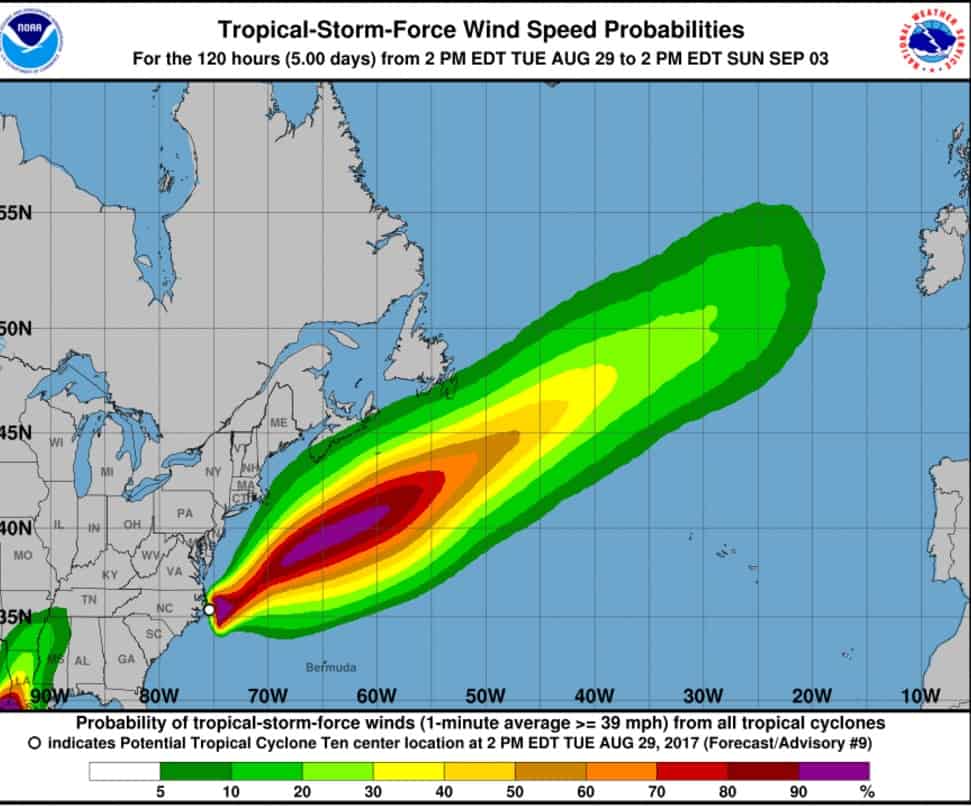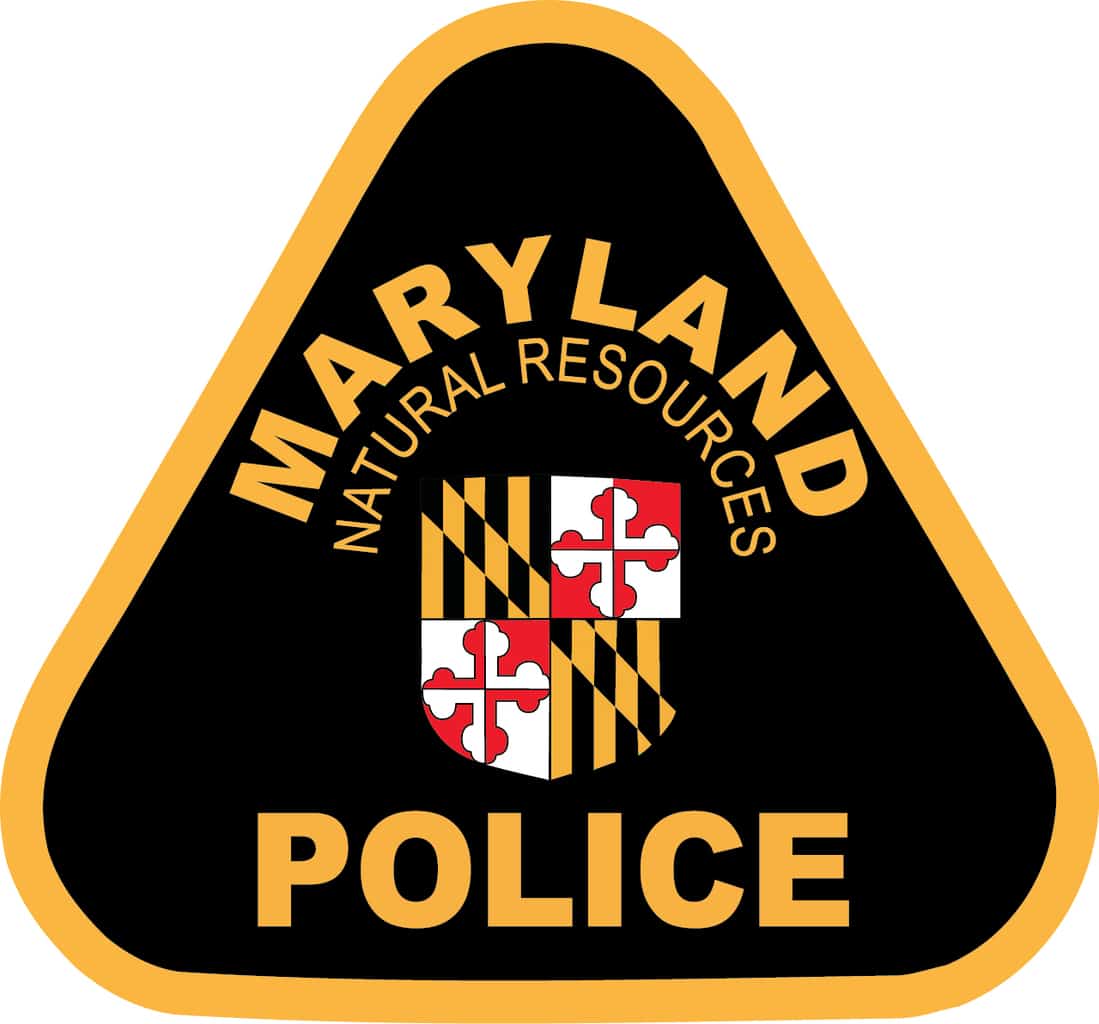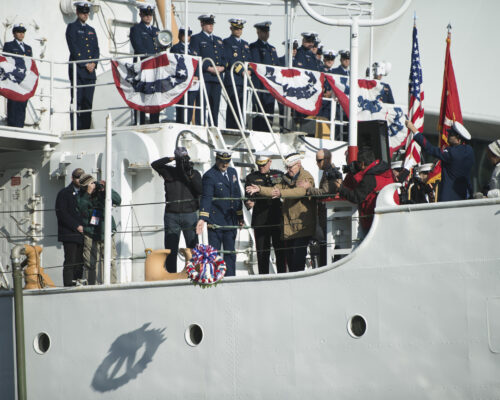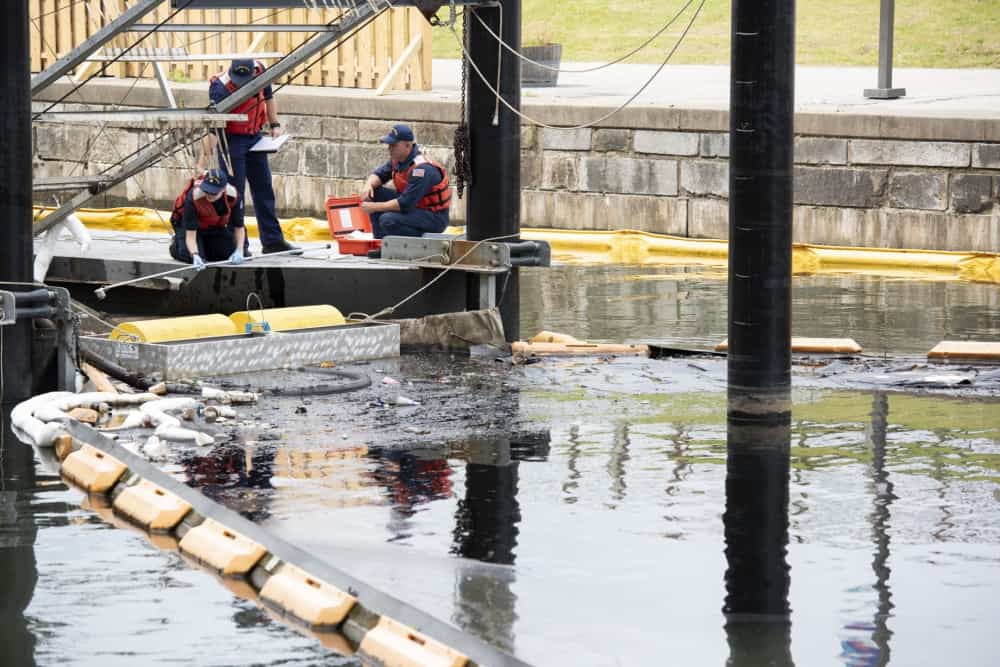A system that climbed up the Atlantic coast, with potential to become a tropical storm, prompted the U.S. Coast Guard to block commercial vessels from entering and leaving the Chesapeake Bay. The USCG Captain of the Port of Hampton Roads closed the port to deep sea traffic, unless special permission is granted, starting at 10 a.m. Tuesday.
USCG set Port Condition X-ray, meaning gale force winds were expected to reach the Virginia Capes within 24 hours.
The National Hurricane Center shows the system strengthening at sea.The National Hurricane Center was closely tracking the system, which had the potential to become a tropical storm, but veered out to sea before approaching the Delmarva Peninsula.
NHC said the disturbance “is expected to accelerate further toward the northeast and east-northeast during the next couple of days….and will continue to move away from the North Carolina coast over the western Atlantic Ocean tonight.”
The disturbance was expected to strengthen at sea, and reach hurricane-force winds far away from land.
A flash flood watch and wind advisory were both in effect until late Tuesday night for several southeast Virginia counties, as well as Somerset, Wicomico and Worcester Counties in Maryland.
Rainfall totals were between one and three inches on Maryland’s Eastern Shore, but parts of Accomack County, Virginia saw more than four inches of rain.
In Norfolk, several roads were covered in water Tuesday, and the city opened municipal garages for drivers to safely store their cars.
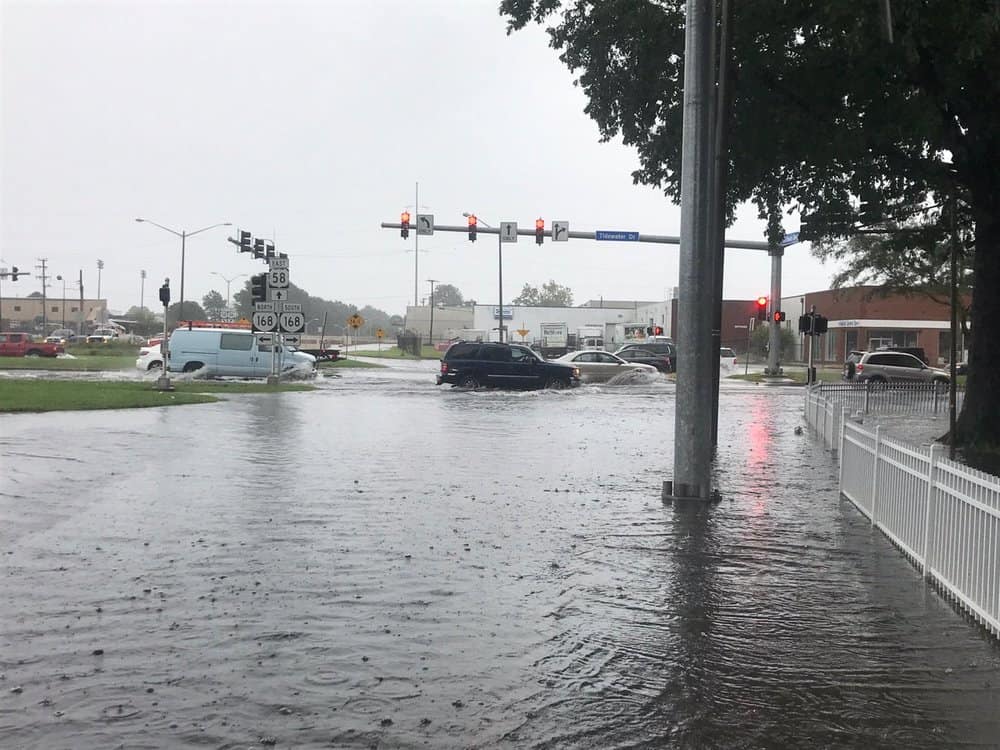
And by that evening, emergency responders were helping to move flooded cars off of roadways.
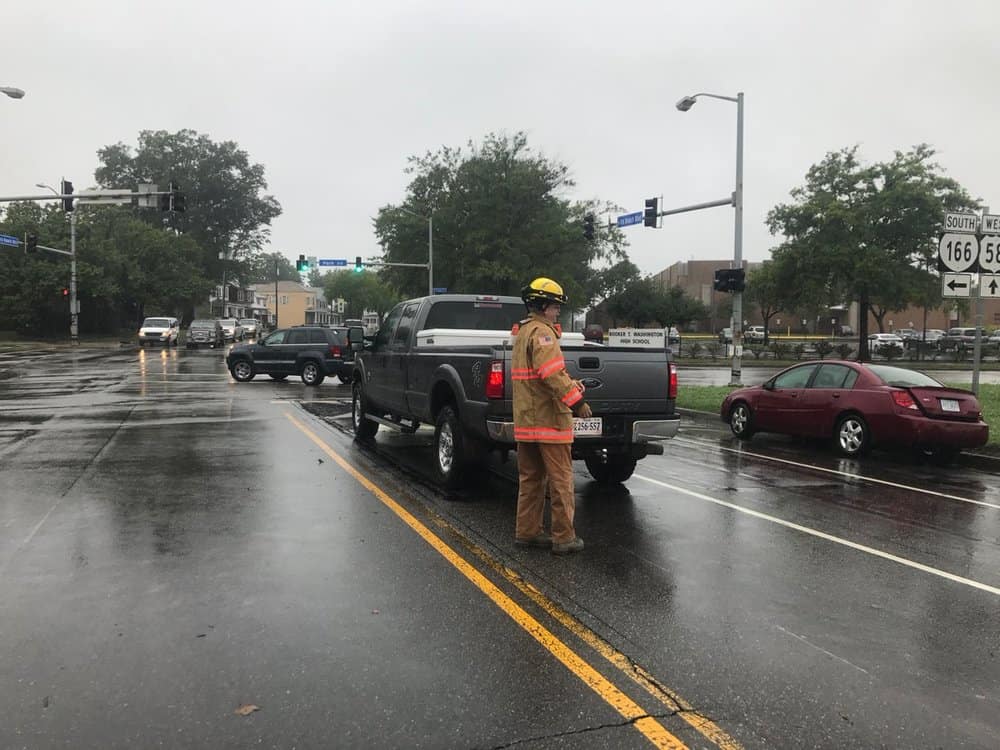
At the mouth of the Bay, the Coast Guard was most concerned about wind and waves. The Captain of the Port of Hampton Roads provided the following guidelines for the closure of the mouth of the Bay to commercial boats: Duration of closure: The length of the closure will depend on the actual wind and weather conditions. The COTP Hampton Roads will release further updates regarding the length of the closure or reopening the port.
Movement within the Port: Vessels will be permitted to move within the port, but should do so with extreme caution. Additionally, deep draft vessels anchored in the vicinity of Cape Charles are required to ask permission from the COTP if the vessel intends to transit within the port.
Vessels Transiting from Baltimore: Deep draft vessels intending to transit from Baltimore, exiting the Chesapeake Bay, will not be permitted to transit south of York Spit Channel Buoys 37 (Light List Number 7225) and 38 (LLNR 7230) during the port closure.
Special Consideration: If a vessel or vessel representative believes there are circumstances that require a vessel to arrive or depart during the time of this restriction, they may request an exception from the COTP. Facility operators and agents should contact the Sector Hampton Roads office at (757) 638-6635 to request permission for vessels anticipating to enter the Chesapeake Bay.
It is primarily the facility operator’s decision to allow vessels to remain moored during the passing of the tropical storm. Facilities that do not allow vessels to remain moored must provide them with sufficient notice to allow vessels time to move to a safe mooring, heavy weather anchorage, or depart to sea prior to 10 a.m.Tuesday.
All facility and vessel operators should continue to make heavy weather preparations to include ensuring all loose cargo, cargo equipment, and debris are secured safely. All vessel mooring should be reinforced.
Vessels anchored shall prepare for severe winds. Additional anchors should be made ready to let go and preparations shall be made to have a continuous anchor watch. Also, vessels should maintain a continuous listening watch on VHF-FM channel 16.

